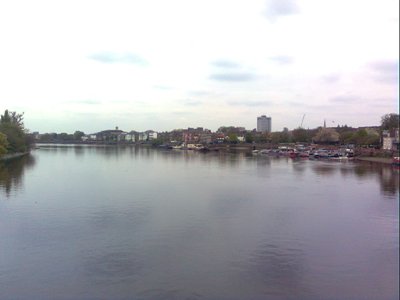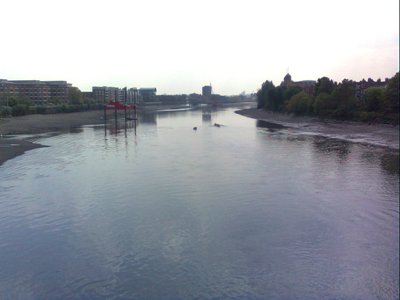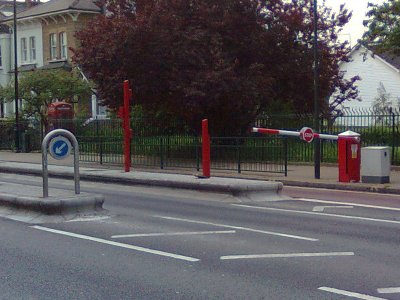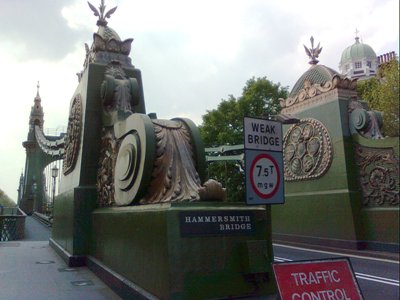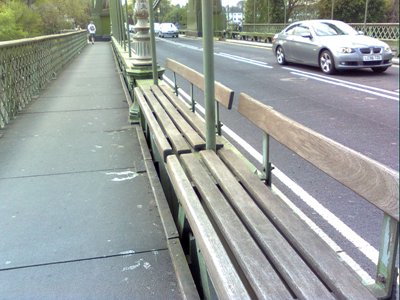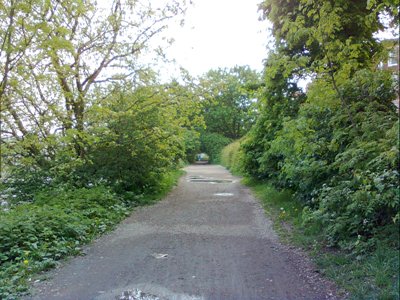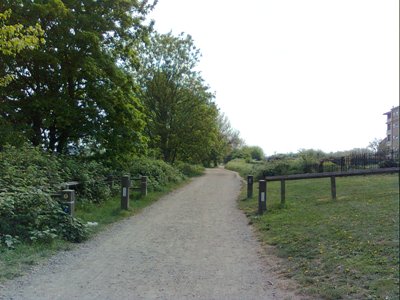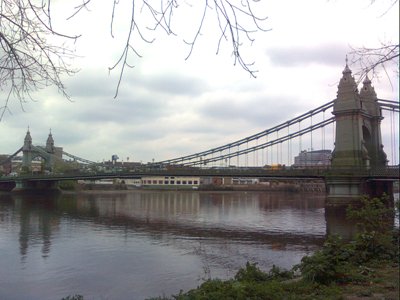
Hammersmith Bridge, the first suspension bridge to be built over the Thames, was first opened in 1827. It consisted of two towers with the roadway suspended from four double rows of chains. It was 20 feet wide narrowing to 14 feet to go through the two archways, with the footpath finishing at the towers forcing pedestrians at that point to walk in the road. In 1887 the bridge was completely rebuilt in the same basic suspension style but much more ornate. The towers and abutments are made of wrought iron with cast iron cladding. The roadway is 29 feet wide narrowing to 21 feet between the towers but the footway is cantilevered out from the main structure allowing pedestrians an uninterrupted crossing. The rebuilt bridge was originally painted pink but a year later in 1888 it was painted bronze green with gold leaf highlights. In 1893 two rows of seats were added to the walkways on each side, a unique feature among London's bridges. In 1845 serious concerns about the safety of the bridge were raised when over 12,000 people crowded onto it to watch the University Boat Race. From 1882 to this day, the bridge is closed to pedestrians on race day. There has continued to be concerns over the safety of the bridge and it has been strengthened many times over the years and today there is a 7.5 ton weight limit for traffic with a width restricted lane for cars and a bus lane with an automated barrier put in place to allow single-decker buses through. Oddly, the IRA have made three unsuccessful attempts to blow up the bridge, in 1939, 1996 and most recently in 2000. |
